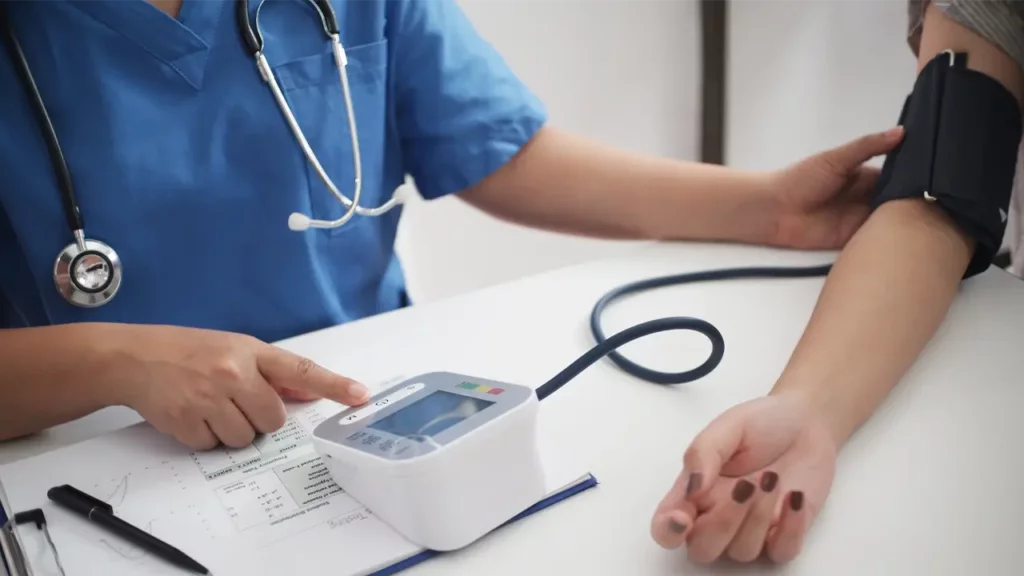Blood pressure is an essential measure of cardiovascular health that helps doctors diagnose and manage hypertension, a significant risk factor for heart disease, stroke, and other complications. However, blood pressure readings can vary from one measurement to another, leading to inconsistent results that may make it challenging to manage hypertension effectively.
Precise and dependable blood pressure measurement plays a crucial role in the accurate identification and treatment of hypertension, as even a slight 5 mm Hg error in blood pressure measurement can result in incorrect classification of hypertension for around 84 million individuals globally, according to a consensus report released in the Journal of Hypertension.
This article aims to explore the factors that can cause blood pressure readings to fluctuate, including risk factors, measurement errors, and different types of hypertensions.
Risk Factors That Affect Blood Pressure
Fluctuations in blood pressure readings can be caused by several risk factors that impact blood pressure levels. One of the most significant risk factors is high blood pressure, or hypertension, which can cause consistently high blood pressure readings. Monitoring blood pressure levels regularly is crucial for individuals with hypertension to manage their condition effectively. It is recommended to take multiple readings, within a few minutes of each other, to ensure accuracy.
Other factors that can cause blood pressure to fluctuate include physical activity, medication use, and diet. Sudden or strenuous physical activity can temporarily increase blood pressure readings, leading to inconsistent results. Stress and anxiety can also cause temporary spikes in blood pressure, making it difficult to accurately measure blood pressure levels in these situations. It is important to avoid caffeine, smoking, and alcohol consumption before taking blood pressure readings to ensure accurate measurements.
The American Heart Association recommends measuring blood pressure in both the systolic and diastolic phases to provide a more accurate overall picture of blood pressure. The systolic pressure measures the pressure when the heart beats, while the diastolic pressure measures the pressure between beats. High systolic blood pressure is a significant risk factor for heart failure and arterial damage.
Proper use of a blood pressure cuff is crucial for accurate readings, and the cuff size should be appropriate for the individual’s arm size. Inconsistencies in blood pressure readings can also occur due to measurement errors, such as improperly placing the cuff or not allowing at least 30 minutes of rest before taking the measurement. By understanding these risk factors and utilizing proper techniques for BP measurement, individuals can better manage their fluctuating blood pressure and reduce the risk of cardiovascular complications.
Blood Pressure Measurement and Cuff Placement
Blood pressure measurements are often taken using a cuff that is placed around the upper arm and inflated to temporarily stop blood flow. The cuff is then gradually deflated, and the pressure readings are recorded using a stethoscope or electronic device. However, several factors can impact the accuracy of blood pressure measurements, including cuff size and placement.
An incorrectly sized cuff can lead to inaccurate blood pressure readings, with a cuff that is too small potentially giving falsely high readings, while a cuff that is too large can give falsely low readings. Proper cuff placement is also crucial for accurate blood pressure measurements. The cuff should be positioned at heart level, and the arm should be supported and relaxed to ensure an accurate reading.
In addition to cuff placement and size, the timing and frequency of blood pressure measurements can also impact the consistency of readings. For example, taking blood pressure readings at different times of the day or in different settings can lead to varying results, known as visit-to-visit variability. Therefore, it is essential to follow proper blood pressure measurement protocols to ensure accurate and consistent readings for hypertension diagnosis and management.
White Coat Hypertension and Masked Hypertension
White coat hypertension and masked hypertension are two types of blood pressure conditions that can lead to inconsistent readings. White coat hypertension refers to a situation where a person’s blood pressure readings are consistently higher when taken in a medical setting, such as a doctor’s office or clinic, than when taken outside of that setting. This condition is believed to be caused by anxiety or stress associated with medical visits and can lead to falsely high blood pressure readings.
On the other hand, masked hypertension refers to a situation where a person’s blood pressure readings are consistently normal when taken in a medical setting but are high when taken outside of that setting. This condition is often associated with increased risk for cardiovascular disease and can go undetected if only measured in a clinical setting.
Both white coat hypertension and masked hypertension can lead to inconsistent blood pressure readings and may require additional monitoring and evaluation to ensure proper diagnosis and management. This includes ambulatory blood pressure monitoring, which involves taking blood pressure readings over a 24-hour period to identify any fluctuations in blood pressure levels. Proper diagnosis and management of these conditions are essential for reducing the risk of cardiovascular disease and other complications associated with high blood pressure.
Labile Hypertension
Labile hypertension is another condition that can cause inconsistent blood pressure readings. It refers to a situation where a person’s blood pressure readings fluctuate frequently and unpredictably, often over short periods of time. This can be caused by a variety of factors, including stress, anxiety, physical activity, and even certain medications.
Unlike white coat hypertension and masked hypertension, labile hypertension is a chronic condition that can persist even outside of medical settings. People with labile hypertension may experience both high and low blood pressure readings, and these fluctuations can increase the risk of heart disease, stroke, and other complications.
Proper diagnosis and management of labile hypertension may involve regular monitoring of blood pressure levels, lifestyle changes such as stress reduction techniques, and medication as prescribed by a healthcare provider. It is important to work closely with a doctor to identify the underlying causes of labile hypertension and develop an individualized treatment plan to manage the condition effectively.
Lifestyle Changes and Medications for Managing Blood Pressure
In addition to understanding the causes of inconsistent blood pressure readings, there are several lifestyle changes and medications that can help manage high blood pressure and reduce the risk of complications. Some of these include:
- Diet: Eating a healthy diet that is low in sodium, saturated fats, and added sugars can help lower blood pressure.
- Exercise: Regular physical activity can help lower blood pressure, improve heart health, and reduce stress and anxiety.
- Stress reduction: Stress and anxiety can cause blood pressure to rise, so finding ways to manage stress, such as meditation or yoga, may help lower blood pressure.
- Medications: There are several medications available that can help lower blood pressure, including diuretics, ACE inhibitors, and beta blockers.
- Regular monitoring: Regular blood pressure monitoring can help identify any fluctuations and allow for early intervention if necessary.
It is important to work with a healthcare provider to develop an individualized treatment plan that considers any underlying medical conditions, medications, and lifestyle factors. With proper management, it is possible to control high blood pressure and reduce the risk of complications such as heart disease, stroke, and kidney damage.
DrKumo Remote Patient Monitoring for Efficient Blood Pressure Monitoring
Inconsistent blood pressure readings can be a significant challenge for both patients and healthcare providers. Fortunately, technology is providing innovative solutions to help address this issue. One such solution is DrKumo remote patient monitoring (RPM) technology, which is widely used to keep blood pressure under control.
DrKumo RPM technology enables patients to manage their health conditions in the comfort of their homes while providing healthcare providers with real-time intelligence for timely intervention. This highly scalable, continuous, real-time monitoring solution is designed for chronic disease management, acute care, post-operation, and hospital care at home.
DrKumo state-of-the-art technology is HIPAA-compliant, mobile-enabled, and powered by an AI/ML engine, providing patients and healthcare providers with a user-friendly solution for managing health conditions. With DrKumo, patients can access quality healthcare from anywhere in the world.
At DrKumo, innovation is at the core of their culture. They are committed to providing the most effective solutions to patients and healthcare providers alike, revolutionizing the way people access quality healthcare. By leveraging technology to provide real-time monitoring and intelligence, DrKumo is transforming healthcare, making it more accessible and convenient for everyone.
Takeaways
Inconsistent blood pressure readings can be concerning, but understanding the causes and risk factors can help identify potential issues and lead to better management of high blood pressure. Lifestyle changes such as diet, exercise, and stress reduction, as well as medications and regular monitoring, can all be effective in controlling blood pressure and reducing the risk of complications. It is important to work with a healthcare provider to develop an individualized treatment plan that considers any underlying medical conditions, medications, and lifestyle factors.
Take control of your health and monitor your blood pressure regularly through RPM. Contact DrKumo now.









